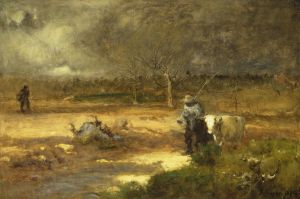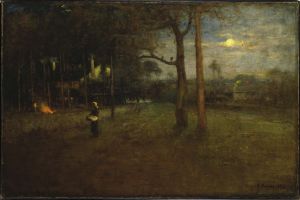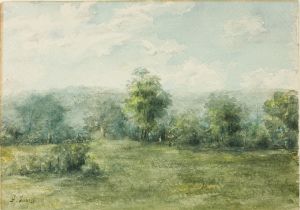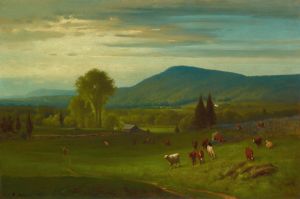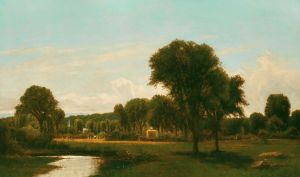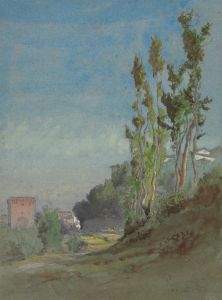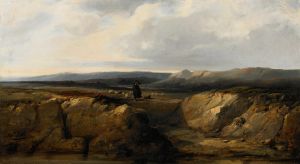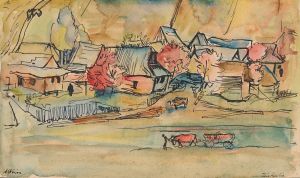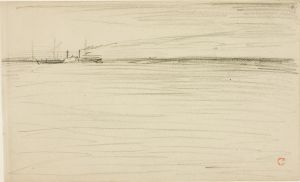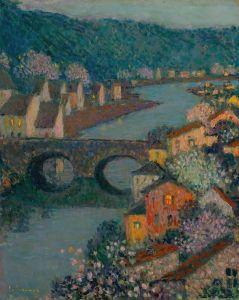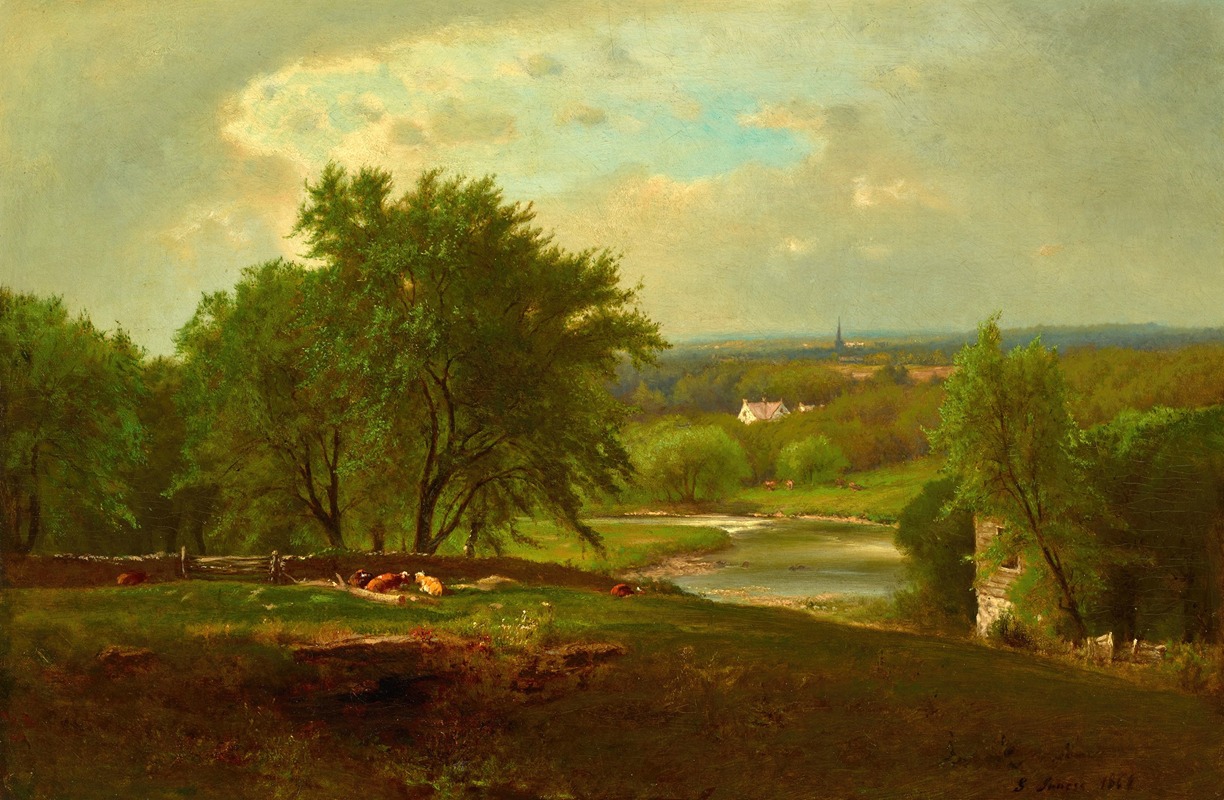
Englewood, New Jersey
A hand-painted replica of George Inness’s masterpiece Englewood, New Jersey, meticulously crafted by professional artists to capture the true essence of the original. Each piece is created with museum-quality canvas and rare mineral pigments, carefully painted by experienced artists with delicate brushstrokes and rich, layered colors to perfectly recreate the texture of the original artwork. Unlike machine-printed reproductions, this hand-painted version brings the painting to life, infused with the artist’s emotions and skill in every stroke. Whether for personal collection or home decoration, it instantly elevates the artistic atmosphere of any space.
George Inness was a prominent American landscape painter associated with the Hudson River School and later the Tonalist movement. Born in 1825, Inness is celebrated for his ability to capture the subtle interplay of light, atmosphere, and color in his works. One of his paintings, "Englewood, New Jersey," exemplifies his mature style, where he moved away from the detailed realism of his earlier works towards a more expressive and atmospheric approach.
"Englewood, New Jersey" is a landscape painting that reflects Inness's deep connection to the natural world and his interest in conveying mood and emotion through his art. The painting depicts a serene view of the countryside in Englewood, a town in Bergen County, New Jersey. This area was significant to Inness as he spent a considerable amount of time in New Jersey, and the landscapes there often inspired his work.
Inness's technique in "Englewood, New Jersey" demonstrates his mastery of color and light. He employed a soft, diffused light to create a sense of tranquility and harmony within the scene. The composition likely features a balanced arrangement of natural elements such as trees, fields, and possibly a body of water, all rendered with a gentle, almost ethereal quality. This approach is characteristic of Inness's later works, where he focused on the spiritual and emotional resonance of the landscape rather than precise topographical details.
The painting is a testament to Inness's belief in the spiritual power of nature. Influenced by the philosophical teachings of Emanuel Swedenborg, Inness sought to express the divine presence in the natural world through his art. "Englewood, New Jersey" can be seen as an embodiment of this philosophy, inviting viewers to experience a sense of peace and reflection.
Inness's work during this period was also marked by a shift towards Tonalism, a style that emphasized mood and atmosphere over detailed representation. This movement was characterized by the use of muted colors and soft outlines, creating a dreamlike quality. "Englewood, New Jersey" likely reflects these tonal qualities, with its subdued palette and harmonious composition.
Throughout his career, Inness received critical acclaim for his innovative approach to landscape painting. His ability to evoke emotion and spirituality through his depiction of nature has left a lasting impact on American art. "Englewood, New Jersey" is a fine example of his mature style and his contribution to the development of American landscape painting.
Today, George Inness is regarded as one of the most influential American artists of the 19th century. His works are held in major museums and collections across the United States, where they continue to inspire and captivate audiences. "Englewood, New Jersey" remains a significant piece within his oeuvre, illustrating his unique vision and artistic legacy.








